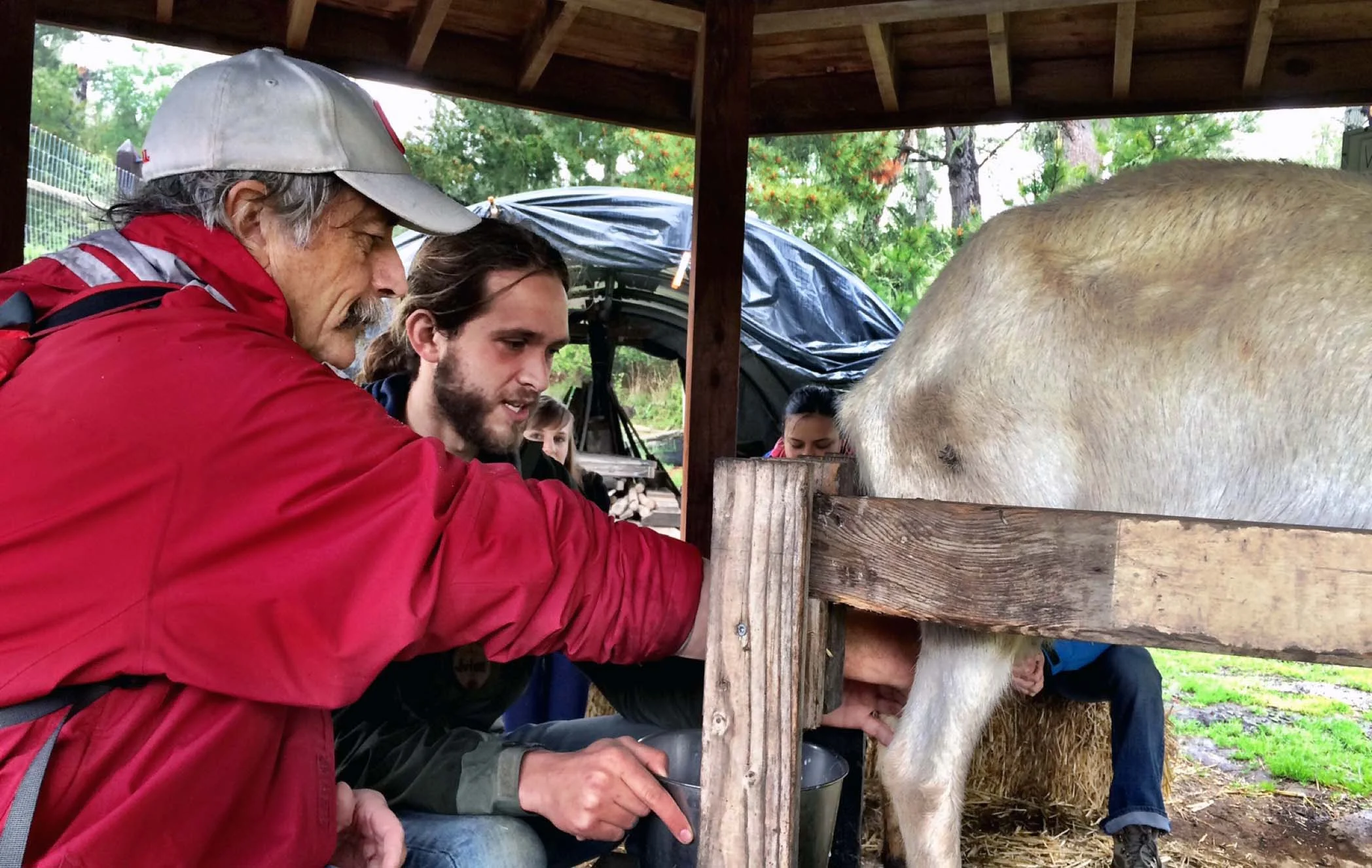Bay Area Design Thinking Layover
Field trip to Vida Verde farm in Pescadero, California.
Back in February, I had a quick Bay Area layover where I stopped by the Stanford d.school to teach a pop-up course with fellow designer Gretchen Wustruck, founder of Curiosity Atlas, and Bay Area philanthropy movers and shakers Jennifer Kane, founder of Empower Philanthropy, and John Cassidy, founder of Klutz. Building on my social impact work at Google and these Creative Nomad Projects, along with the teaching teams’ expertise, we created a design thinking weekend slam asking students to solve non-profits’ challenges in innovative ways.
We’ve been thinking about what a ‘doctors without borders’ format would look like for designers and how we might redesign volunteer opportunities to be more impactful and meaningful for non-profits. We’re interested in supporting designers with new community-based volunteer opportunities to better make use of their unique, yet powerful, expertise. Our interest and this pop-up prototype is two-fold:
First, to both work with students to strengthen them as design thinkers and community activists, as well as to build their skills and toolkits, enabling them to spread their knowledge beyond Stanford, within their home communities.
And second, to engage and formalize ways for experienced, powerful designers to work within their communities on projects with purpose, with solutions to help their neighbors, and supporting change they can touch and feel.
With this prototype, we asked a few initial questions:
- With newer designers, what can you really accomplish in a weekend?
- What is design thinking for local non-profits like, and what tools can we think about that are specific to their constraints?
We worked with two great non-profits in Pescadero, CA:
Puente a non-profit fostering economic prosperity and improving the living conditions, health and dignity of rural families living in the area.
, who promotes educational equity by providing free overnight environmental learning experiences for students who don't otherwise get the opportunity.
To gain empathy for the experience of the students who visit Vida Verde, we learned to milk a goat, and many even joined the 'fresh milk' club.
As with any design sprint, the weekend flew by, and we received some great student feedback from the prototype.
- “It was amazing to see how the before somewhat unstructured ideas turned into a great end-to-end concept."
- “The field trip was great since it really showed us the need of the NGO and we could get first-hand impressions.”
- “Came ready to work hard but enjoy the weekend in an experiential course.”
- “Yes - I actually understand the design process and learned more this weekend than my entire quarter in Design Thinking Studio. I hope that I can take future d.school classes that are as good as this one.”
As this was just a prototype, we already have the next iteration in the making, which will include long form coursework and design weekends to come. Personally, I think a lot about the differences between the Bay Area community - one rich with innovation, designers, and prototypes - and the one that I grew up in, in El Paso, TX, as well as the nomadic communities I’ve recently encountered - those without the same access to the abundance of amazing power designers and tech builders. How might we design a set of design tools, frameworks, and experiences for engagement at both ends of this spectrum?
And, as we build the next prototypes, I’m left asking:
How might we design volunteering and social impact work that can most effectively harness designers’ skillsets?
How might we enable and inspire non-profits to launch innovative projects and thinking within their own organizations?
Be in touch if you want to join this effort.



